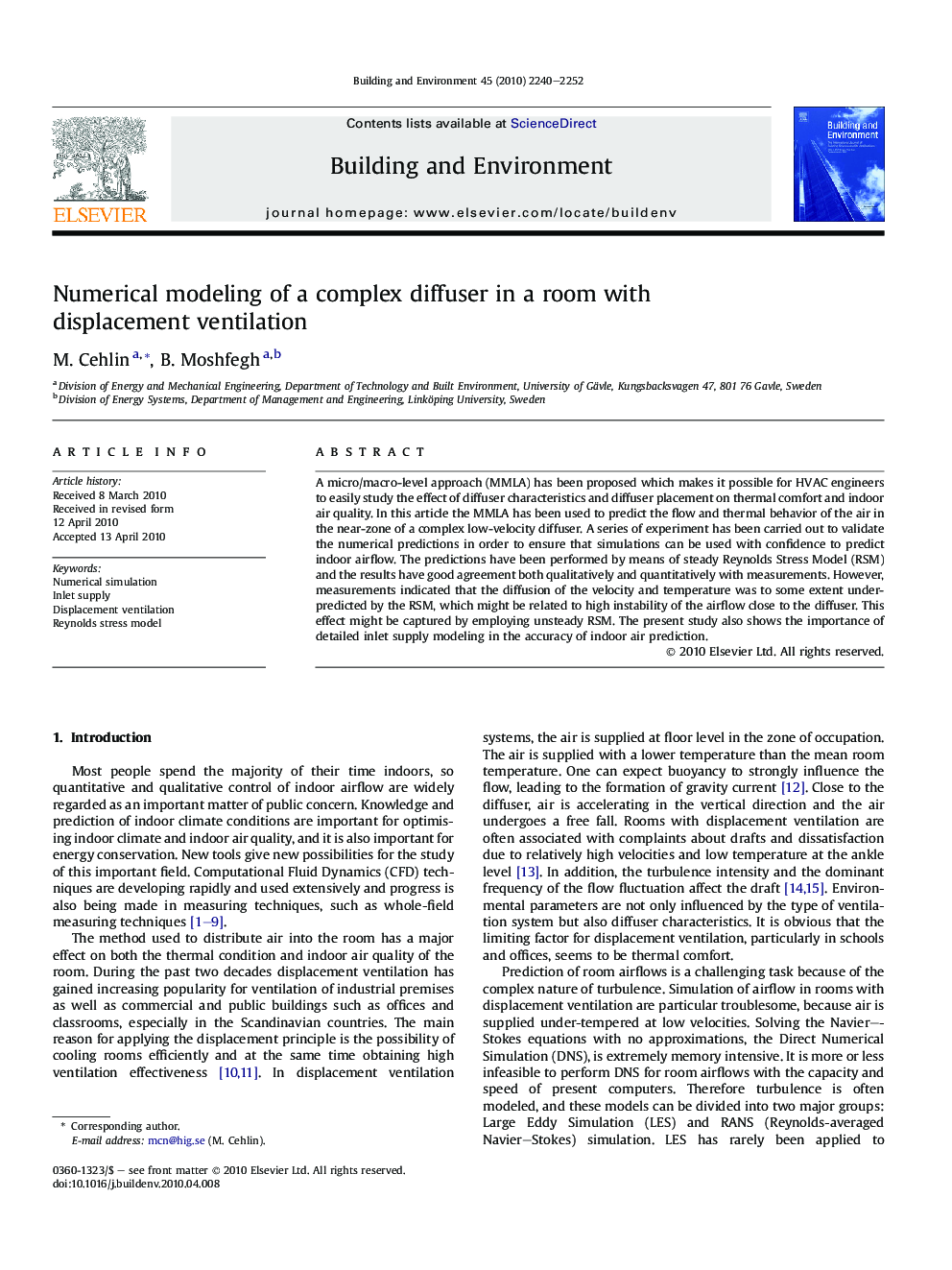| Article ID | Journal | Published Year | Pages | File Type |
|---|---|---|---|---|
| 249240 | Building and Environment | 2010 | 13 Pages |
A micro/macro-level approach (MMLA) has been proposed which makes it possible for HVAC engineers to easily study the effect of diffuser characteristics and diffuser placement on thermal comfort and indoor air quality. In this article the MMLA has been used to predict the flow and thermal behavior of the air in the near-zone of a complex low-velocity diffuser. A series of experiment has been carried out to validate the numerical predictions in order to ensure that simulations can be used with confidence to predict indoor airflow. The predictions have been performed by means of steady Reynolds Stress Model (RSM) and the results have good agreement both qualitatively and quantitatively with measurements. However, measurements indicated that the diffusion of the velocity and temperature was to some extent under-predicted by the RSM, which might be related to high instability of the airflow close to the diffuser. This effect might be captured by employing unsteady RSM. The present study also shows the importance of detailed inlet supply modeling in the accuracy of indoor air prediction.
